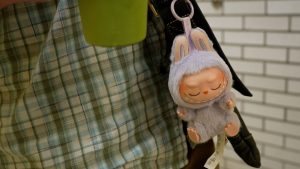The Evolution of Black Friday
How did America’s busiest shopping day come to be?
November 21, 2018
This Friday, on November 23, millions of Americans will rush out of their houses at 4 a.m. and fight through crowds and miserable traffic to celebrate the unofficial beginning of the Christmas season, Black Friday. The nature of this day may seem like such a 21st century thing, but the holiday has actually been around longer than you may suspect.
The term “Black Friday” was first used in 1869 to refer to a financial crisis, but it wasn’t until almost a century later, in 1961, that it was used to describe the day after Thanksgiving. Every year on this day, department stores opened at 6:00 a.m. to increase shopping hours, but in the early 2000’s, stores started opening at around 4 or 5 a.m. In 2011, Target was the first store to open at midnight, and many stores started to follow. Now, some stores open on Thanksgiving day and stay open through the night to attract more customers. The onset of doors opening up on Thanksgiving day has brought up a lot of controversy among people in regard to people shopping instead of spending time with family.
Long gone are the days where every deal and item featured in Black Friday is on a first-come, first-served basis. No longer do we have to rush to get out to be one of the first people at stores at the early hours of the morning in order to guarantee the purchase of a price that is a steal. In the past, Black Friday truly was all that it claimed to be, as the deals were only one day out of the whole year. Now, it isn’t uncommon to see stores and businesses running Black Friday deals throughout the week leading up to Black Friday and even as early as the start of November. Yes, a small select few items and sales are only available for a small window of time, but more often than not, “door-buster” sales can be found online with the same discount, if not a better discount.
There has been a steady increase in the number of shoppers and amount spent by shoppers on Black Friday since 2002. In 2002, Americans spent a total of $416 billion on Black Friday weekend, and last year in 2017, that number increased to $682 billion. The 2018 estimate is $717.5 billion, with an average of $1,007.24 spent per person over the course of the weekend. Now, Black Friday is known as the busiest shopping day of the year, but that has only been the case since 2005.
As the use of the internet grew, a new shopping day, Cyber Monday, started in 2005. The popularity of this new “holiday” has increased over the years, yet the sales still fall behind the actual Black Friday, with only $3.39 billion in total sales in 2017. Although technology is rapidly spreading to many different aspects of our lives, a good amount of people still do prefer to to physically go out and do shopping.
Historically, Black Friday was when people would physically go out and do their shopping in stores, while Cyber Monday was the day for people to purchase items online. In recent years, companies like Amazon are stating their online sales early, not just on Monday. People are able to purchase the same discounted items online with a possible even better discount without having to leave the comfort of our homes or dealing with a possible stampede of sale-hungry people who will stop at almost nothing to get a special sale item.
The initial appeal of Black Friday was to get the best deals of the year for holiday shopping, but it has changed so much over the years that it may no longer be worth it. Despite sales starting earlier, stores opening for longer hours, and Cyber Monday taking a more prominent place, the popularity and sales figures of Black Friday continue to increase, and odds are the trend will sustain itself for many years to come.














